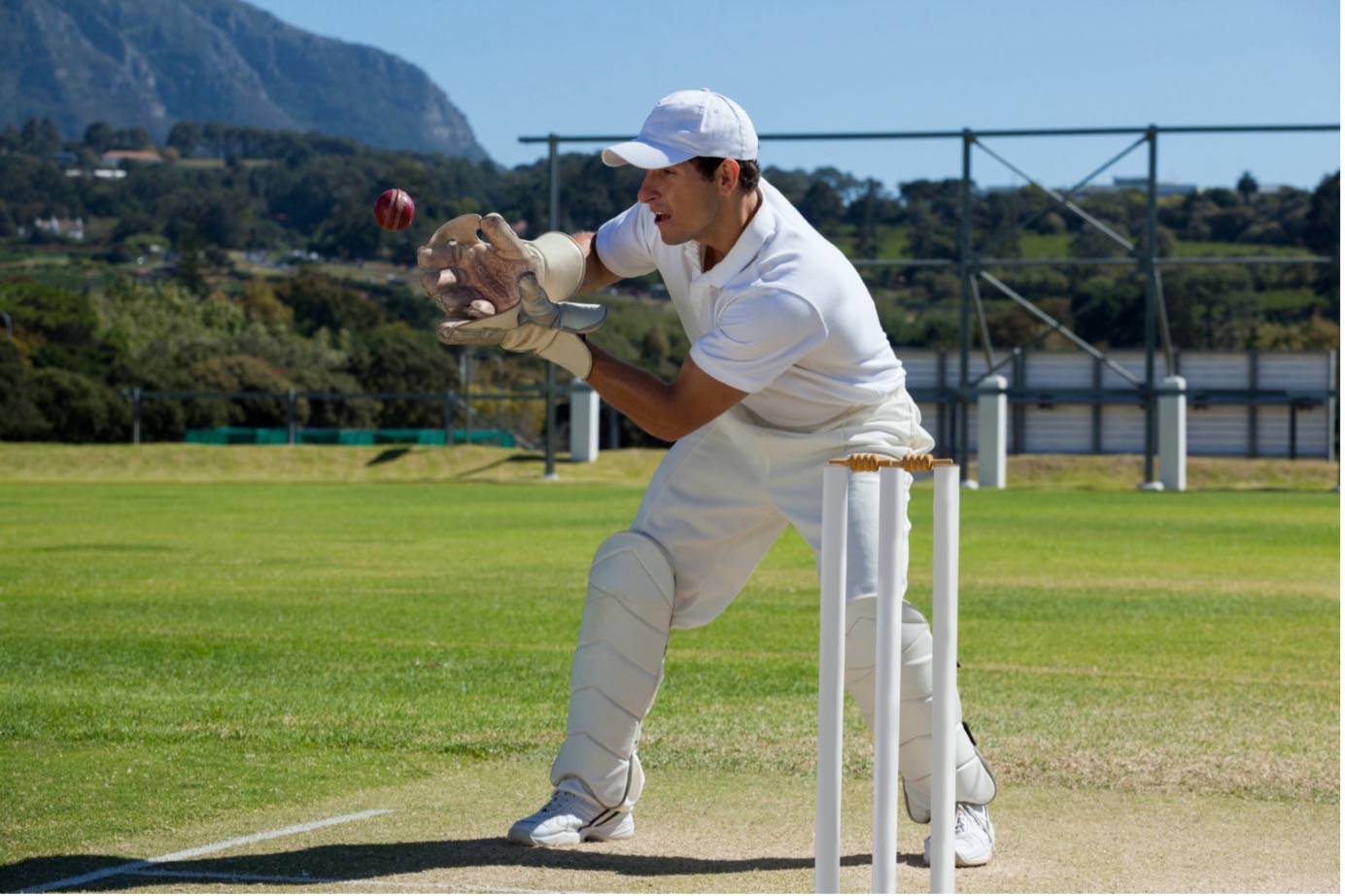Wicketkeeping is a crucial skill in cricket that requires a unique blend of agility, concentration, reflexes, and anticipation. While often overlooked by the importance of batting and bowling, strong wicketkeeping is vital for success, with stunning catches, agile stumpings, and communication behind the stumps often influencing the outcome of the cricket match. In this blog, we at CRICKET FOR ALL will explore the skills required to master the art of wicketkeeping.
1. Perfecting the Stance and Balance:
Firstly, the foundation of effective wicketkeeping begins with the right stance and balance. To master this, it is recommended that you keep your feet shoulder-width apart, bend your knees to form a low, squatting stance, and position your body and gloves just outside off-stump.
Additionally, position your feet so that you put weight primarily in your toes. This will help you move swiftly out of position, and in any direction required. By adopting this wicketkeeping stance, you can:
- See the bowler’s delivery & identify the line of the ball.
- Closely monitor the batsman’s positioning, shot & the direction of the ball (leading to more catches, run outs & stumping opportunities).

2. Glove Work: Catching and Collecting:
For every wicketkeeper, catching and collecting the ball is their most-important role. As such, it is crucial to master these skills in the following ways:
- Catching: Focus on keeping your hands relaxed and soft. As the bowler delivers the ball, maintain focus on the ball’s trajectory and move your hands towards the line of the ball. Ensure you take the ball cleanly and slowly, rather than aggressively snatching as this may cause you to fumble and drop the ball.
- Collecting: Practice collecting the ball cleanly from different angles—both down the leg side and off-side. Develop the ability to anticipate the ball’s path and move swiftly to catch the ball.
3. Anticipation and Reflexes:
Wicketkeepers often have to react instinctively to edges and deflections, increasing the need to train their reflexes. To do this, we recommend having a partner throw a ball towards you from various angles and distances.
This will help sharpen your reactions and develop the ability to adjust quickly to unexpected deflections during matches.

4. Footwork and Movement:
Good footwork and movement are also essential for wicketkeeping, and as such, should be regularly practiced. This includes:
- a) Lateral Movement: Master the art of shuffling quickly to your right or left to cover ground as the bowler releases the ball. When doing this, keep your body low to maintain balance when changing directions.
- b) Moving Up and Down: Practice quickly rising to take catches above the stumps and crouching for balls that stay low. Ensure your footwork is smooth and quick to avoid tripping over and missing potential wicket opportunities.
5. Stumpings and Wicket Management:
To master the art of wicketkeeping, it’s crucial to hone the skill of stumping and taking wickets. We recommend doing this in the following ways:
- a) Stumpings: Work on your timing and coordination with the team. Specifically, anticipate the flight of the bowler’s delivery and, as it reaches you, practice moving swiftly to gather the ball and cleanly break the stumps. Communication with the bowler and surrounding fielders is crucial for successful stumpings.
- b) Wicket Management: Always be alert to opportunities for runouts and direct hits. Practice throwing the ball at the stumps from various angles and distances to develop a strong throwing arm and accuracy.

6. Strong Communication:
While wicketkeeping primarily involves watching the ball and taking catches, strong communication is also vital to this role! They are the eyes and the ears of team, from communicating with the bowlers to advise the best delivery, pointing out possible edges, indicating which fielders should chase the ball, to signalling when they will take responsibility of catching the ball.
It is a wicketkeeper’s communication skills which can lift their team’s spirits, help develop strategies, and keep everyone focused and informed of individual roles.
7. Fitness and Conditioning:
Wicketkeeping demands a high level of fitness and endurance. As such, it is important to regularly engage in various training exercises, including:
- Strength training
- Agility drills
- Cardio exercises.
By maintaining strong fitness and conditioning, this will ensure you’re in top physical shape to perform effectively throughout the game.
8. Mental Toughness:
Finally, wicketkeeping requires mental toughness as the intense focus required for long periods-of-time can often be mentally taxing. To enhance this, we recommend engaging in regular mindfulness exercises, visualisation, as well as maintaining a positive attitude on the field. This will not only strengthen your mental resilience, but allow you to enjoy your game, and perform during pressured wicketkeeping moments.
Concluding Thoughts:
Mastering the art of wicketkeeping in cricket requires consistent practice, dedication, and a passion for honing your skills. By focusing on the techniques mentioned above and combining them with a strong work ethic and mental fortitude, you can elevate your wicketkeeping prowess and become a valuable asset to your team. Remember, wicketkeeping is not just about making dismissals but also playing an integral role in shaping the outcome of the game. So, step onto the field with confidence, embrace the challenges, and continue refining your craft to become a true wicketkeeping master.
